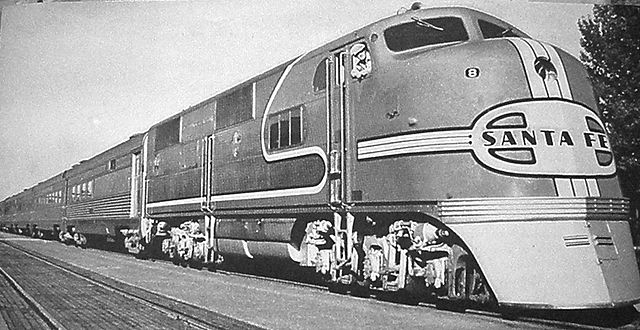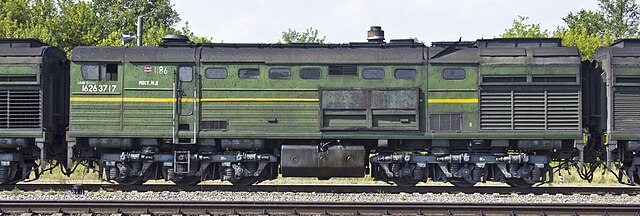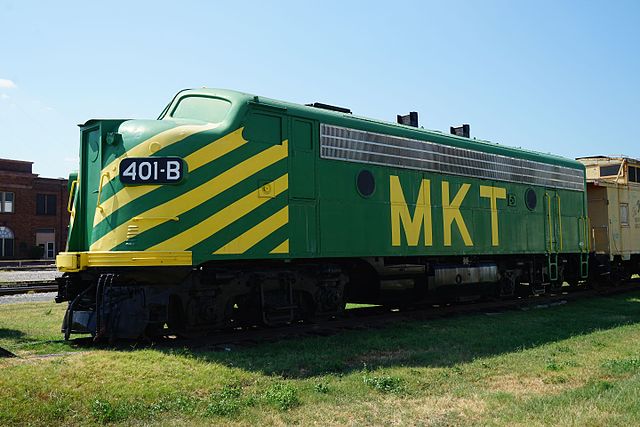The EMC E1 was an early passenger-train diesel locomotive developing 1,800 hp, with an A1A-A1A wheel arrangement, and manufactured by Electro-Motive Corporation of La Grange, Illinois. They were built during 1937 and 1938 for the Atchison, Topeka and Santa Fe Railway for a new generation of diesel-powered streamlined trains. 8 cab-equipped lead A units and three cabless booster B units were built. The initial three locomotives were AB pairs built to haul the Santa Fe's Super Chief diesel streamliners, while the others were built as single A units to haul shorter trains. The locomotives were diesel-electrics with two 900 hp (670 kW) Winton 201-A engines each, with each engine driving its own generator to power the traction motors. The E1 was the second model in a long line of passenger diesels of similar design known as EMD E-units. All Winton 201A-engined Santa Fe passenger units, including the E1s, were extensively rebuilt into the 80-class E8M engines in 1952–53. These were similar to production E8 models, but derated to 2,000 hp so as not to burn out the early traction (axle) motors.

A 1938 publicity photo of Santa Fe's Golden Gate passenger train pulled by ATSF E1 no. 8, which was used exclusively for Golden Gate service
A B unit, in railroad terminology, is a locomotive unit which does not have a control cab or crew compartment, and must therefore be operated in tandem with another coupled locomotive with a cab. The terms booster unit and cabless are also used. The concept is largely confined to North America. Elsewhere, locomotives without driving cabs are rare.
"B" unit of the Russian 3TE10MK diesel locomotive with a cab-styled body
Russian OPE1A [ru; uk] industrial electro-diesel locomotive for quarry railways with primary electric locomotive and two diesel-electric B units
B unit converted from an EMD F9AM locomotive. The cabin shape was preserved, but its windows were blanked out and the front door was added.
A four-axle EMD GP38-2 B-unit coupled with six-axle SD40-2 A-unit



![Russian OPE1A [ru; uk] industrial electro-diesel locomotive for quarry railways with primary electric locomotive and two diesel-electric B units](https://upload.wikimedia.org/wikipedia/commons/thumb/d/d3/%D0%9E%D0%9F%D0%AD1%D0%90-044.jpg/640px-%D0%9E%D0%9F%D0%AD1%D0%90-044.jpg)

